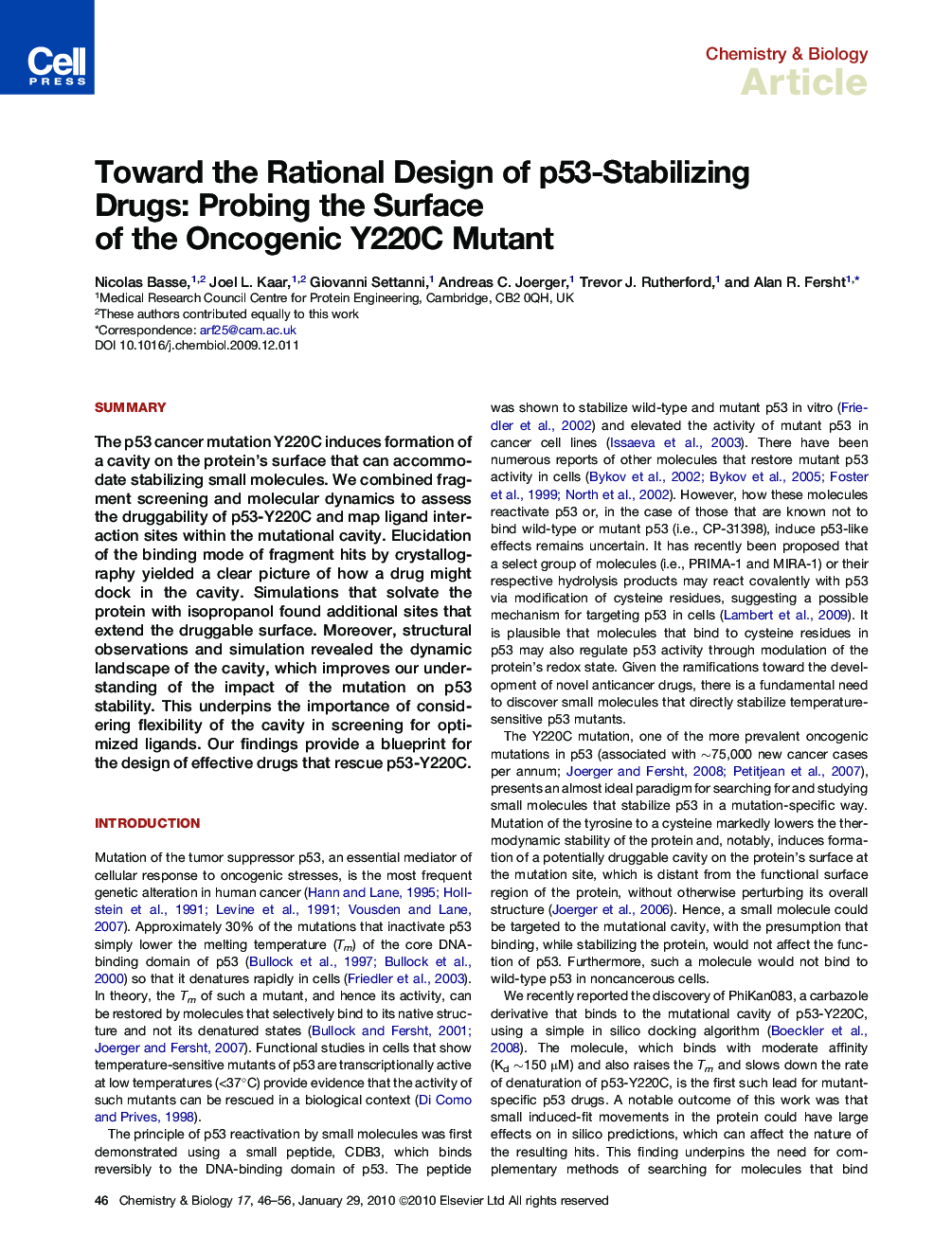| Article ID | Journal | Published Year | Pages | File Type |
|---|---|---|---|---|
| 1391994 | Chemistry & Biology | 2010 | 11 Pages |
SummaryThe p53 cancer mutation Y220C induces formation of a cavity on the protein's surface that can accommodate stabilizing small molecules. We combined fragment screening and molecular dynamics to assess the druggability of p53-Y220C and map ligand interaction sites within the mutational cavity. Elucidation of the binding mode of fragment hits by crystallography yielded a clear picture of how a drug might dock in the cavity. Simulations that solvate the protein with isopropanol found additional sites that extend the druggable surface. Moreover, structural observations and simulation revealed the dynamic landscape of the cavity, which improves our understanding of the impact of the mutation on p53 stability. This underpins the importance of considering flexibility of the cavity in screening for optimized ligands. Our findings provide a blueprint for the design of effective drugs that rescue p53-Y220C.
Graphical AbstractFigure optionsDownload full-size imageDownload high-quality image (367 K)Download as PowerPoint slideHighlights► Ligand-binding sites on p53 mutant Y220C identified by fragment screening and MD ► Crystallographic binding modes of fragment hits solved, showing key interactions ► Plasticity of cavity site highlights link between protein flexibility and stability ► Fragment hits reduce simulated protein dynamics, thus stabilizing local structure
